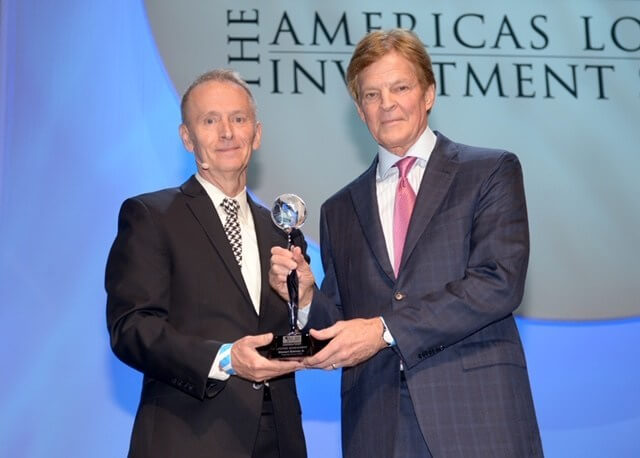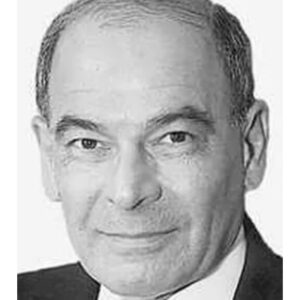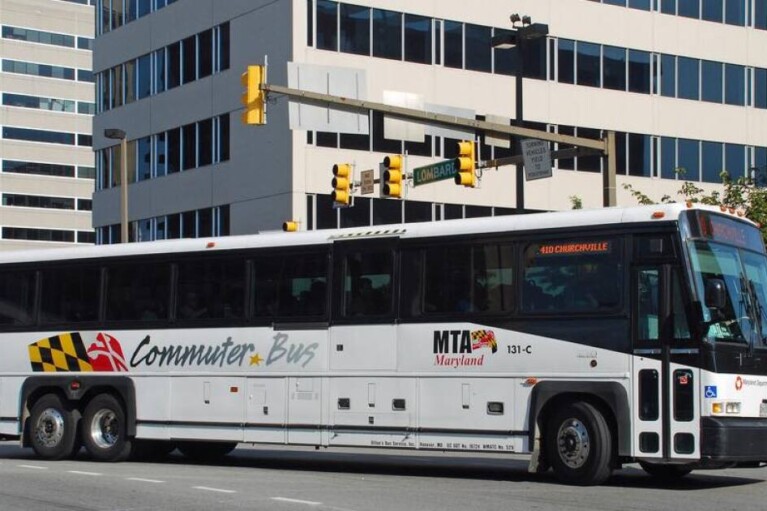Frank DeFilippo: If Bainum’s Newspaper Bid Shines, The (Baltimore) Sun Also Rises

There was a day, back in the 1960s, when The Baltimore Sun was ranked among the 10 best newspapers in America by Time magazine, itself now a shriveled, miniature version of the upstart publication Henry Luce founded in 1923.
It stood its stratospheric place at the top alongside such publishing totems as The New York Times, The Los Angeles Times, The St. Louis Post Dispatch, The Chicago Tribune and The Wall Street Journal, and others, many of them that still exist also grasping for a life preserver. Nationally, 1,810 newspapers ceased publication between 2004-18.
The Sun’s editor in-chief, Price Day, pronounced his product “The best unread newspaper in America.”
The Sun had 10 foreign bureaus strategically placed around the globe, the second largest Washington bureau of 16 reporters, outnumbered only by The New York Times, and a bureau in every county surrounding Baltimore City as well as a Western Maryland outpost.
The Sun’s State House bureau, separate from its Annapolis office, was, by comparison to others, an outsized crew of four, augmented by beat specialists when necessary, anchored by the intimidating and rumpled hulk of Charles Whiteford and boasting such names over the years as Anthony Lukas, Adam Clymer, Michael Parks, Gene Oishi, Tom Fenton, Barry Rascovar, Arnold Issacs, Anthony Barbieri, who advanced to the paper’s managing editor, and many others who went on to journalistic fame, if not fortune. Among them was Fred Hill, who, a few years ago, co-edited a splendid book of essays on the decline and fall of his former newspaper, “The Life of Kings.”
The Sun published page after agate-type page of every bill introduced in the General Assembly as well as their progress through the legislative pipeline to passage or defeat. It was, among the elite and the effete, daily reading of Biblical importance.
The Sun was the paper of record in Baltimore, but never the circulation leader. Its daily press run was about half that of its afternoon in-house rival, The Evening Sun, and both were fewer than the city’s third newspaper, Hearst’s randy and rowdy The News American.

Frank A. DeFilippo
Baltimore was a lunch-pail city. When the shift-whistles blew at three in the afternoon, waiting at home on the white marble stoops at quitting time were the afternoon paper of choice and a Natty Boh. The two evening newspapers had a combined circulation of more than half a million, while The Sun hovered around 150,000 to 160,000 at its peak and when the city’s population was near a million.
The Sun, with its dense coverage of world affairs, its snobbish editorials and its vacuum-cleaner reporting of local politics and government affairs was reserved for the paneled boardrooms of downtown’s law offices and brokerage houses as well as the haute Zip codes of Roland Park and Guilford and the velvety horse farms of Baltimore County’s “the Valley.” The Sun was the mouthpiece of the Baltimore establishment.
The Sun, in its era of importance, was segregated by class as well as race, reflecting its border state if not southern sensibilities as well as the nose-in-the-air attitude of some of its socially-placed editors. Well into the 60s, Black people were still referred to in print as “Negroes.”
The society pages – that’s what they were called in those days – were indexed by class, distinguished by the size of bridal pictures. Young ladies in the “Social Register” received the largest display, and those in the “Blue Book” the next largest. The hoi polloi were given the remains, called one-column kuts, the smallest size pictures, if they were given space at all. Black people were not featured.
It was back-of-the-envelope mathematics among the political class that an editorial endorsement by The Sun was automatically worth 25,000 votes, given that its faithful readers, not followers of politics but simply clipped the editorial endorsements as a kind of “Cliff’s Notes” in the voting booth and flicked the levers according to The Sun’s dictate.
The Sun was responsible for elevating scallywags to public prominence as well as occasionally massaging the political process to advance its corporate interests. It once attacked friends of Gov. Marvin Mandel, for example, for buying property adjacent to the state-owned BWI-Friendship Airport at the same time other entities in its portfolio sought state highway improvements for a shopping center it owned on the Eastern Shore.
It lavished praise on George P. Mahoney – and created a 10-time losing candidate for public office – as a lone public crusader who single-handedly broke the tightly-knit paving cartel in Baltimore. But Mahoney didn’t break up the paving cartel; he joined it. Mahoney made his millions (or whatever) by shaking down other politicians and not by paving streets.
And when Mahoney ran against Spiro T. Agnew for governor in 1966, The Sun turned on Mahoney as a segregationist, only to turn again on Agnew when he got caught with his fingers in the tambourine.
When The Sun planned to build a new office and printing plant on Calvert Street, in downtown Baltimore, it conspired with Political Boss James H. Jack Pollack to round up the votes on the City Council, which Pollack controlled, to close off a city street to expand room for its new headquarters.
Back in the late 1980s, or early 1990s, somebody at The Sun got the bright idea that the Baltimore paper would challenge The Washington Post for the invisible, but apparently revenue-producing, title of circulation leader in Maryland. It may be difficult to grasp, but the Maryland-based paper was not the best seller in its home state. The imaginary battle was never engaged, though The Sun probably would have lost because of the Post’s superior resources and population advantage.
For much of its late existence, ownership of The Sun was voted, in trust, by banks and law firms representing families, heirs and others of interest. But nothing comes between good families like good money when one side wants out.
Since those years, The Sun, though a series of sales, mergers, acquisitions and other boardroom ju-jitsu, has ended up in the company of bottom-feeders. Its resources and its staff have been depleted to 40 reporters.
The Sun, now diminished, degraded by its absentee landlord, and its circulation on a steep downward slide to a new low of 43,000, might be nearing rescue to a future as a non-profit model, an appropriate assignment for a print newspaper in today’s electronic world.
It was, for the record, pre-deceased by its competitors. The News American waved goodbye to Baltimore in 1986, and The Evening Sun pulled the plug in 1995, rendering The Sun a lonely artifact in the city of its origin.
The newspaper business was long ago described as a rich-man’s game – in the tradition of the Hearst, Pulitzer, Ochs, Sulzberger and Chandler families, and now Jeffrey Bezos and Warren Buffet. They may soon have company.
The angel who may bail out The Sun is Stewart Bainum Jr., heir to a nursing home (Manor Care, since sold) and hotel (Choice International) fortune, headquartered in Rockville. Bainum has formed an alliance with other deep-pocket investors who are interested in reclaiming and restoring the watchdog-eye of local journalism.
Bainum is no dilettante. He’s a former member of the General Assembly and an MBA who understands due diligence and how to pick and choose. He is said to be devoted to community journalism, and, along with his wife, Sandy, has vowed to put his money to public service.
Bainum and his associate for this venture, the Swiss Billionaire Hansjorg Wyss, have put $680 million on the table to buy The Sun and other Tribune Publishing affiliate newspapers — $50 million more than the offer of Alden Global Capital, the hedge fund and majority stock holder of the whole kit and kaboodle and corporate bloodsucker. Bainum’s idea is to spin off the individual papers back to local buyers and owners where, by birthright, they belong.
None of this would have happened without the determination and resilience of The Sun’s reporters and others who want to do their jobs without the interference of layoffs, furloughs and cutbacks that diminish the product and give purchase to the corrupting influences on the community where they live, work and play. They protested, organized rallies and circulated petitions.
It’s a truism in journalism that reporters should not become part of the story they’re covering. But in this case that could not be avoided. They are the story.





 Creative Commons Attribution
Creative Commons Attribution